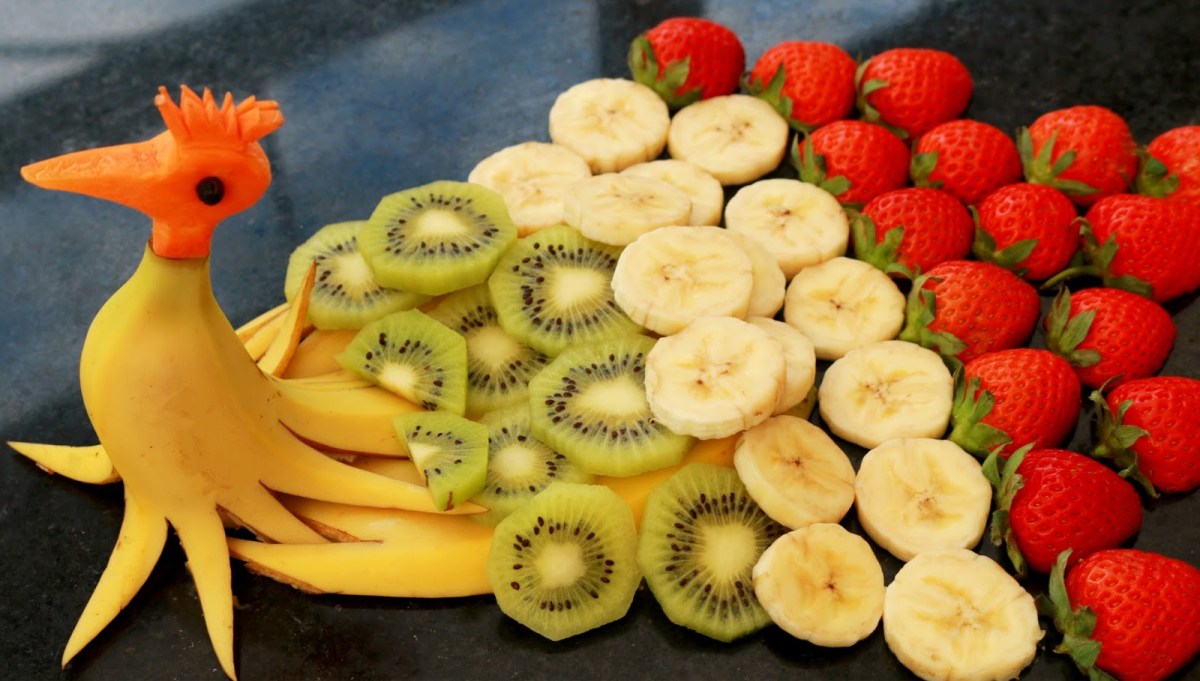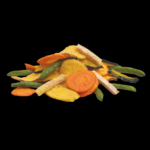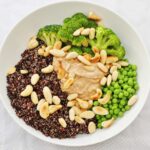Discover a world of flavor beyond soy! This guide unveils a treasure trove of delicious, creative recipes perfect for those seeking soy-free alternatives or simply wanting to expand their culinary horizons. Imagine vibrant stir-fries bursting with color and texture, fragrant breads rising to golden perfection, and globally-inspired dishes that tantalize the taste buds—all without a single soybean in sight. Prepare to embark on a culinary adventure filled with surprising substitutions and satisfying results, proving that deliciousness knows no soy limits.
We’ll explore a wealth of soy-free ingredients, from pantry staples to global cuisine inspirations. Learn to identify and replace common soy-based products, master the art of soy-free baking, and navigate the complexities of soy allergies and intolerances. Each recipe is presented with detailed, step-by-step instructions, vivid descriptions of the cooking process, and insightful nutritional comparisons. Get ready to unlock a whole new level of culinary creativity!
Soy-Free Pantry Staples
Building a well-stocked soy-free pantry is the cornerstone of delicious and versatile soy-free cooking. Having these essential ingredients on hand allows for quick meal preparation and creative culinary exploration, eliminating the worry of accidental soy consumption. This list focuses on providing a foundation for diverse and flavorful dishes.
Essential Soy-Free Pantry Staples Shopping List
A diverse pantry ensures culinary flexibility. This list categorizes ten essential soy-free staples, covering grains, legumes, oils, and more, to build a strong base for numerous recipes.
- Grains: Quinoa – A complete protein, quinoa offers a nutty flavor and fluffy texture, perfect as a base for bowls or a side dish.
- Grains: Brown Rice – A versatile whole grain, brown rice provides fiber and a subtle earthy flavor, ideal as a side or in stir-fries.
- Legumes: Lentils (red and green) – Red lentils cook quickly and create creamy soups and stews, while green lentils hold their shape well in salads and side dishes.
- Legumes: Chickpeas – Canned or dried, chickpeas are a fantastic source of protein and fiber, perfect in salads, dips, or as a standalone snack.
- Oils: Olive Oil – A staple for Mediterranean cooking, olive oil adds a fruity, slightly bitter flavor and healthy fats to dishes.
- Oils: Avocado Oil – With a high smoke point, avocado oil is ideal for high-heat cooking and adds a mild, buttery flavor.
- Nuts & Seeds: Sunflower Seeds – A great source of healthy fats and protein, sunflower seeds add a pleasant crunch to salads and baked goods.
- Spices: Turmeric – This vibrant spice adds a warm, earthy flavor and is known for its anti-inflammatory properties.
- Spices: Cumin – With an earthy, warm, and slightly bitter flavor, cumin enhances the taste of many dishes, especially those with vegetables or legumes.
- Other: Coconut Milk (full-fat) – Adds creaminess to soups, curries, and desserts, lending a rich coconut flavor.
Three Unique Soy-Free Recipes
These recipes utilize only the ingredients listed above, demonstrating the versatility of a well-stocked soy-free pantry.
Quinoa Salad with Roasted Chickpeas and Sunflower Seeds
This vibrant salad is a perfect light lunch or side dish.
- Preheat oven to 400°F (200°C). Toss one can of chickpeas (drained and rinsed) with 1 tablespoon of olive oil, ½ teaspoon of cumin, and salt and pepper to taste. Roast for 20 minutes, until crispy.
- Cook 1 cup of quinoa according to package directions. Fluff with a fork and let cool.
- In a large bowl, combine the cooked quinoa, roasted chickpeas, ½ cup of sunflower seeds, and 2 tablespoons of olive oil. Season with salt and pepper.
- Optional: Add chopped fresh herbs like parsley or cilantro for extra flavor and visual appeal.
Lentil Soup with Turmeric and Coconut Milk
A hearty and flavorful soup, perfect for a chilly evening.
- Sauté 1 chopped onion in 1 tablespoon of olive oil until softened. Add 1 cup of red lentils, 4 cups of vegetable broth, 1 teaspoon of turmeric, and ½ teaspoon of cumin. Bring to a boil.
- Reduce heat and simmer for 20-25 minutes, or until lentils are tender.
- Stir in 1 can (13.5 oz) of full-fat coconut milk and heat through. Do not boil. Season with salt and pepper to taste.
- Garnish with fresh cilantro or a squeeze of lime juice, if desired.
Brown Rice Stir-fry with Lentils and Vegetables
A quick and easy weeknight meal packed with flavor and nutrients. (Note: This recipe assumes you have additional vegetables on hand beyond the pantry staples. Feel free to substitute with whatever vegetables you prefer.)
- Cook 1 cup of brown rice according to package directions.
- While rice is cooking, sauté chopped vegetables (e.g., carrots, broccoli, bell peppers) in 1 tablespoon of avocado oil until tender-crisp.
- Add ½ cup of green lentils (cooked according to package directions) to the vegetables and stir to combine.
- Add cooked brown rice to the vegetable and lentil mixture. Season with salt, pepper, and a pinch of cumin.
- Serve hot.
Comparison of Soy-Free Protein Sources
This section explores the flavor profiles of three common soy-free protein sources, highlighting their unique characteristics.
| Protein Source | Flavor Profile | Texture | Culinary Applications |
|---|---|---|---|
| Seitan (wheat gluten) | Mildly savory, can absorb flavors well. Often described as having a “meaty” texture when prepared correctly. | Chewy, firm, can be dense depending on preparation. | Excellent in stir-fries, stews, and as a meat substitute in sandwiches or wraps. |
| Tempeh Substitute (e.g., made from chickpeas or lentils) | Earthy, slightly nutty, depending on the base ingredient. The flavor of the base ingredient will be prominent. | Firm but crumbly, similar to tempeh but potentially less dense. | Suitable for crumbles, stir-fries, or as a base for vegetarian burgers. |
| Tofu Substitute (e.g., firm silken tofu made from cashews or other nuts) | Mild, creamy, the flavor will depend heavily on the base ingredient used. Nut-based substitutes often have a nutty flavor. | Soft and creamy (silken) to firm (depending on the preparation method and base ingredient). | Works well in creamy sauces, dips, or as a base for desserts in the case of silken tofu substitutes. |
Global Soy-Free Cuisine
Embarking on a soy-free culinary journey opens doors to a world of vibrant flavors and diverse cooking traditions. Many cuisines, rich in history and heritage, naturally exclude or minimally utilize soy products, offering a treasure trove of inspiration for those seeking delicious and allergy-friendly meals. This exploration delves into three distinct culinary landscapes, showcasing their inherent soy-free nature and providing adaptable recipes.
Three International Cuisines Naturally Low in Soy
Several global cuisines boast rich culinary traditions that predate the widespread use of soy. These cuisines often rely on other ingredients to provide umami and depth of flavor, resulting in naturally soy-free dishes. Exploring these cuisines provides a wealth of options for those avoiding soy.
Mediterranean Cuisine: A Symphony of Herbs and Olive Oil
The Mediterranean diet, celebrated for its health benefits, naturally incorporates minimal soy. The emphasis is on fresh produce, olive oil, herbs, and spices, creating flavorful dishes without relying on soy-based ingredients.
Greek Lemon Chicken (Kotopoulo Lemonato)
Imagine succulent chicken pieces, bathed in a bright, lemony sauce, punctuated by the fragrant oregano and the salty kiss of the sea. The chicken is tender, the sauce is zesty and vibrant, and the overall dish is a testament to the simplicity and deliciousness of Mediterranean cooking.
Moroccan Tagine with Lamb and Apricots
Picture a fragrant stew, simmered slowly until the lamb is meltingly tender, the apricots are plump and sweet, and the spices create a warm, exotic aroma. The vibrant colors – the deep red of the apricots, the rich brown of the lamb, the golden hue of the spices – create a visually stunning dish.
Indian Cuisine: A Spice-Infused Culinary Landscape
Indian cuisine, with its vast array of regional variations, offers a plethora of soy-free options. The focus on aromatic spices, lentils, and vegetables creates complex and satisfying dishes without the need for soy.
Saag Paneer (with Tofu Substitute)
A vibrant green spinach curry, traditionally made with paneer (Indian cheese), can be easily adapted using firm tofu as a soy-free substitute. The creamy texture of the spinach, punctuated by the subtle tang of the tofu, provides a delicious and satisfying meal. The dish is a testament to the adaptability of Indian cuisine.
Chana Masala (Chickpea Curry)
This hearty and flavorful chickpea curry, brimming with aromatic spices like cumin, coriander, and turmeric, showcases the depth and complexity of Indian flavors. The chickpeas are tender and perfectly seasoned, the sauce is rich and deeply satisfying, a testament to the power of spices.
Ethiopian Cuisine: A Feast of Flavors and Textures
Ethiopian cuisine, known for its unique flavors and communal dining style, typically avoids soy. The use of berbere spice blends, lentils, and various grains creates dishes that are both flavorful and satisfying.
Doro Wat (Chicken Stew)
Picture a rich and flavorful chicken stew, simmered in a fragrant berbere spice blend. The chicken is tender and juicy, the sauce is deeply flavorful, and the overall dish is a comforting and satisfying experience. The complex spice blend provides a warmth and depth that is uniquely Ethiopian.
Misir Wot (Red Lentil Stew)
Imagine a hearty and flavorful red lentil stew, simmered until the lentils are tender and the spices have infused the dish with their warm aroma. The lentils are rich and creamy, the sauce is deeply satisfying, and the overall dish is a perfect example of the hearty and flavorful nature of Ethiopian cuisine.
Adapting a Soy-Based Recipe: Soy Sauce-Free Teriyaki Chicken
Traditional teriyaki sauce relies heavily on soy sauce. To create a soy-free version, replace soy sauce with a combination of coconut aminos, mirin, rice vinegar, and a touch of brown sugar. This substitution maintains the savory-sweet balance of the original recipe while eliminating soy. The coconut aminos provide a similar umami depth, while the mirin and rice vinegar contribute sweetness and acidity. The final product will have a slightly different flavor profile, but it remains delicious and soy-free.
A Visual Soy-Free Feast
Imagine a vibrant platter: A bed of emerald green spinach, glistening with olive oil, forms the base. Atop this sits a mound of saffron-yellow turmeric rice, its grains distinct and fluffy. Nestled amongst the rice are tender chunks of glistening, honey-glazed chicken, their browned edges contrasting beautifully with the vibrant greens and yellows. A sprinkle of toasted sesame seeds adds a touch of nutty flavor and visual texture. The entire dish is a symphony of colors and textures, a testament to the beauty and deliciousness of soy-free cuisine.
Baking Without Soy

Soy, while a versatile ingredient, isn’t always welcome in the kitchen, particularly for those with allergies or following specific diets. Fortunately, the world of baking offers many delicious alternatives to create light, fluffy breads, crispy cookies, and moist cakes without relying on soy products. This section explores soy-free baking, offering recipes and insights into substituting soy’s role in traditional baking methods.
Soy in traditional baking often acts as an emulsifier, binding ingredients, adding moisture, and contributing to texture. It can be found in various forms, including soy lecithin, soy flour, and soy milk. Replacing soy requires understanding its function in each recipe. Successful substitutions often involve a combination of ingredients that mimic soy’s properties. For example, applesauce can add moisture, while flaxseed meal or chia seeds can provide binding.
Soy-Free Bread Recipe
This recipe utilizes a blend of flours and a flax egg for a hearty, subtly sweet loaf with a soft crumb. The flax egg adds moisture and binding, similar to the function of soy in many bread recipes. The overall texture is dense but not heavy, offering a satisfying chew. The flavor is slightly nutty from the flaxseed and subtly sweet from the maple syrup.
| Ingredient | Quantity | Unit | Function |
|---|---|---|---|
| Whole Wheat Flour | 2 | cups | Structure |
| All-Purpose Flour | 1 | cup | Structure & Texture |
| Flaxseed Meal | 1/4 | cup | Binding agent |
| Water | 1/4 | cup | Mix with flaxseed |
| Maple Syrup | 1/4 | cup | Sweetener & Moisture |
| Baking Powder | 2 | teaspoons | Leavening agent |
| Salt | 1 | teaspoon | Flavor enhancer |
| Warm Water | 1 | cup | Activate yeast |
| Active Dry Yeast | 2 | teaspoons | Leavening agent |
- Combine flaxseed meal and water; let sit for 5 minutes to form a “flax egg”.
- In a large bowl, combine flours, baking powder, and salt.
- In a separate bowl, combine warm water, yeast, and maple syrup. Let stand until foamy.
- Add the yeast mixture and flax egg to the dry ingredients. Mix until a dough forms.
- Knead the dough for 5-7 minutes until smooth and elastic.
- Place the dough in a greased bowl, cover, and let rise in a warm place for 1 hour, or until doubled in size.
- Shape the dough into a loaf and place it in a greased loaf pan.
- Let rise for another 30 minutes.
- Bake at 375°F (190°C) for 30-35 minutes, or until golden brown.
Soy-Free Oatmeal Cookies Recipe
These cookies offer a chewy texture and a warm, comforting flavor profile. The oats provide a hearty base, while the brown sugar contributes a rich caramel-like sweetness. The absence of soy doesn’t compromise the texture or flavor; instead, it results in a simple, satisfying treat.
| Ingredient | Quantity | Unit | Function |
|---|---|---|---|
| Rolled Oats | 1 1/2 | cups | Base |
| Brown Sugar | 1/2 | cup | Sweetener |
| Butter | 1/2 | cup | Fat & Flavor |
| Egg | 1 | large | Binding |
| Vanilla Extract | 1 | teaspoon | Flavor |
| Cinnamon | 1 | teaspoon | Spice |
| Baking Soda | 1/2 | teaspoon | Leavening agent |
| Salt | 1/4 | teaspoon | Flavor enhancer |
- Preheat oven to 350°F (175°C).
- Cream together butter and brown sugar until light and fluffy.
- Beat in egg and vanilla.
- In a separate bowl, combine oats, cinnamon, baking soda, and salt.
- Gradually add the dry ingredients to the wet ingredients, mixing until just combined.
- Drop by rounded tablespoons onto ungreased baking sheets.
- Bake for 10-12 minutes, or until golden brown.
Soy-Free Chocolate Cake Recipe
This recipe creates a moist, decadent chocolate cake without using any soy products. The richness of the cocoa powder is balanced by the sweetness of the sugar, resulting in a classic chocolate cake experience. The texture is soft and tender, with a slightly fudgy crumb.
| Ingredient | Quantity | Unit | Function |
|---|---|---|---|
| All-Purpose Flour | 2 | cups | Structure |
| Unsweetened Cocoa Powder | 3/4 | cup | Chocolate Flavor |
| Baking Powder | 2 | teaspoons | Leavening agent |
| Baking Soda | 1 | teaspoon | Leavening agent |
| Salt | 1/2 | teaspoon | Flavor enhancer |
| Sugar | 1 3/4 | cups | Sweetener |
| Eggs | 2 | large | Binding & Moisture |
| Milk | 1 | cup | Moisture |
| Vegetable Oil | 1/2 | cup | Moisture & Tenderness |
| Vanilla Extract | 1 | teaspoon | Flavor |
| Boiling Water | 1 | cup | Moisture & Richness |
- Preheat oven to 350°F (175°C).
- Grease and flour two 9-inch round baking pans.
- In a large bowl, whisk together flour, cocoa powder, baking powder, baking soda, and salt.
- In a separate bowl, cream together sugar, eggs, milk, oil, and vanilla.
- Gradually add the dry ingredients to the wet ingredients, mixing until just combined.
- Stir in the boiling water until the batter is smooth.
- Divide the batter evenly between the prepared pans.
- Bake for 30-35 minutes, or until a wooden skewer inserted into the center comes out clean.
From the vibrant hues of a globally-inspired soy-free feast to the comforting aroma of freshly baked soy-free bread, this journey has proven that a soy-free lifestyle is not only manageable but also incredibly rewarding. The key lies in understanding the versatile alternatives available and embracing the creative process of substitution. With the knowledge gained and the recipes explored, you’re now equipped to confidently navigate the world of soy-free cooking, creating delicious and satisfying meals that are both healthy and free from soy. Bon appétit!
FAQ
What are the common signs of a soy allergy?
Common symptoms include hives, itching, swelling, digestive upset (nausea, vomiting, diarrhea), and in severe cases, anaphylaxis (a life-threatening allergic reaction).
Can I use soy-free alternatives in all recipes?
While many soy-based ingredients have excellent substitutes, some recipes might require adjustments in technique or additional ingredients to achieve the desired texture and flavor.
Where can I find soy-free products?
Soy-free products are widely available in most grocery stores, health food stores, and online retailers. Look for clearly labeled “soy-free” products or check ingredient lists carefully.
Are all soy-free products automatically healthy?
No. Just as with soy-containing products, soy-free alternatives vary in nutritional value. Pay attention to the ingredient list and nutritional information to make informed choices.


